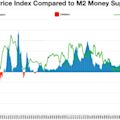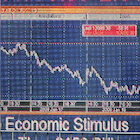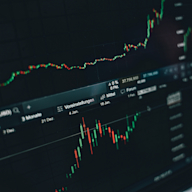Search results
Series Report --Already know the series identifier for the statistic you want? Use this shortcut to retrieve your data. Text files --For those who want it all. Download a flat file of the entire database or large subset of the database.
- News Releases
CPI for all items rises 0.3% in April; shelter and gasoline...
- Factsheets
The CPI for household energy is a component of the fuels and...
- Contact Cpi
For general CPI questions: 8:30 a.m.–4:30 p.m. ET....
- Regional Resources
The .gov means it's official. Federal government websites...
- One-Screen Data Search
We would like to show you a description here but the site...
- Top Picks for CPI-All Urban Consumers-Old Series
We would like to show you a description here but the site...
- Pub Time.Series Cu
download.bls.gov - /pub/time.series/cu/ [To Parent...
- Pub Time.Series CW
download.bls.gov - /pub/time.series/cw/ [To Parent...
- Pub Time.Series Ap
download.bls.gov - /pub/time.series/ap/ [To Parent...
- Pub Time.Series Su
download.bls.gov - /pub/time.series/su/ [To Parent...
- News Releases
- 25.60Add to watchlist-0.00 (-0.02%)At close: Tue. Dec 12, 2023 10:14 AM EST · Delayed Quote (USD) · Market closed
- Open25.62High25.60Low25.58
- Mkt CapN/AP/E (TTM)18.48Div & YieldN/A & N/A
- Prev. Close25.6152 Wk. Low24.0752 Wk. High25.80
The Consumer Price Index (CPI) is a measure of the average change over time in the prices paid by urban consumers for a market basket of consumer goods and services. Indexes are available for the U.S. and various geographic areas.
This page provides the latest reported value for - United States Consumer Price Index (CPI) - plus previous releases, historical high and low, short-term forecast and long-term prediction, economic calendar, survey consensus and news.
- What Is The Consumer Price Index (CPI)?
- Understanding The Consumer Price Index
- Types of Consumer Price Indexes
- Consumer Price Index (CPI) Formulas
- Consumer Price Index (CPI) Categories
- How Is The Consumer Price Index (CPI) used?
- Consumer Price Index (CPI) vs. Unemployment
- Critiques of Consumer Price Index (CPI) Methodology
- The Bottom Line
The Consumer Price Index (CPI) measures the monthly change in prices paid by U.S. consumers. The Bureau of Labor Statistics (BLS) calculates the CPI as a weighted averageof prices for a basket of goods and services representative of aggregate U.S. consumer spending. The CPI is one of the most popular measures of inflation and deflation. The CPI rep...
The BLS collects about 80,000 prices monthly from some 23,000 retail and service establishments. Although the two CPI indexes calculated from the data both contain the word urban, the more broad-based and widely cited of the two covers 93% of the U.S. population. Shelter category prices accounting for a third of the overall CPI are based on a surve...
The BLS publishes two indexes each month. The Consumer Price Index for All Urban Consumers (CPI-U) represents 93% of the U.S. population not living in remote rural areas. It doesn't cover spending by people living in farm households, institutions, or on military bases. CPI-U is the basis of the widely reported CPI numbers that matter to financial m...
The more common CPI-U calculation entails two primary formulas. The first is used to determine the current cost of the weighted average basket of products, while the second is used to analyze the year-over-year change.
The monthly CPI releasefrom the BLS leads with the change from the prior month for the overall CPI-U as well as its key subcategories, along with the unadjusted change year-over-year. The BLS detailed tables show price changes for a variety of goods and services organized by eight umbrella spending categories. Subcategories estimate price changes f...
The CPI is widely used by financial market participants to gauge inflation and by the Federal Reserve to calibrate its monetary policy. Businesses and consumers also use the CPI to make informed economic decisions. Since CPI measures the change in consumers' purchasing power, it is often a key factor in pay negotiations.
In the broadest sense, the CPI and unemploymentrates are often inversely related. This is not always the case in every economy, but the Federal Reserve often attempts to decrease one metric while balancing the other. For example, in response to the COVID-19 pandemic, the Federal Reserve took unprecedented supervisory and regulatory actions to stimu...
Because the CPI Index is so crucial to economic policy and decision-making, its methodology has long been controversial, drawing claims it either understates or overstates inflation. A panel of economists commissioned by Congress to study the issue in 1995 concluded the CPI overstated inflation and was followed by calculation changes to better refl...
The Consumer Price Index is an important economic metric. It measures the average change in prices paid by consumers over a period of time for a basket of goods and services. The index is calculated and published monthly by the Bureau of Labor Statistics. It is among the most common measures of inflation, indicating the health and direction of the ...
- Jason Fernando
- 2 min
People also ask
What is the Consumer Price Index (CPI)?
Is the Consumer Price Index a measure of inflation?
What is the consumer price index for all urban consumers (CPI-U)?
What does CPI stand for?
Jun 10, 2022 · Economists and policymakers are closely watching America’s two primary inflation gauges: The Consumer Price Index, which was released on Friday, and the Personal Consumption Expenditures index.
- Jeanna Smialek
Jan 24, 2022 · The consumer price index, the most widely followed inflation gauge, increased 7.0% from December 2020 to December 2021 – its highest rate in nearly 40 years. The CPI – or, to give it its full name, the Consumer Price Index for All Urban Consumers (CPI-U) – isn’t the government’s only measure of inflation. For that matter, it isn’t ...
A CPI of 195.3, as an example from 2005, indicates 95.3% inflation since 1982. The Consumer Price Index (CPI-U) is provided by the U.S. Department of Labor Bureau of Labor Statistic and is used to measure inflation.








